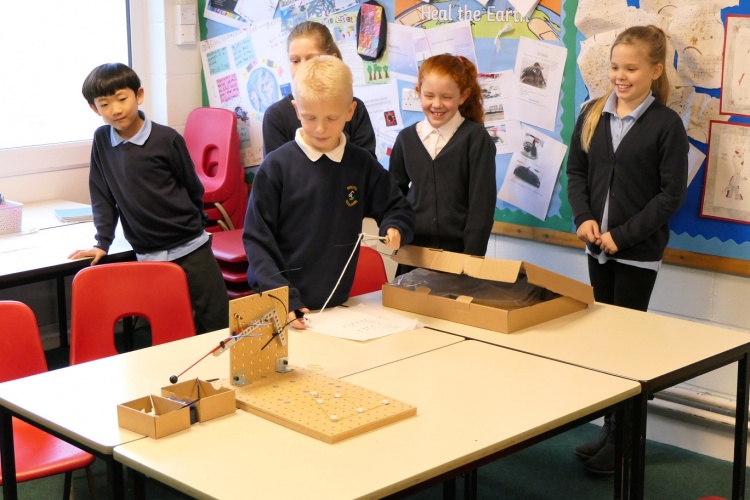
The ‘Eighty Eight Pianists’ project is the brainchild of University of Cambridge Professor of Engineering and the Environment, Julian Allwood. Working with engineers from the University of Sheffield Advanced Manufacturing Research Centre (AMRC), the schoolchildren are designing and building extendable mechanical fingers to allow 88 people to play the piano at once, breaking the current world record of 21 people.
“By inventing mechanical finger-extenders, we can have one person play each note: Eighty Eight Pianists,” said Professor Allwood. “Hearing about da Vinci’s inventions, and learning how a piano works, the children have been working together with the engineering teams to create the designs to build real-life mechanical extendable fingers.
“We’ve had nearly 2,100 pupils across the country invent ideas for how we could play a piano from nearly five meters away, and the whole team had the most fantastic time looking through these incredible inventions. We were just amazed at how clever and bright the children have been in coming up with ideas that we didn’t expect!"

The finger extenders will be taken to Birmingham where 88 young piano students will be taught how to use them to play a newly commissioned piece composed by Martin Riley and conducted by Julian Lloyd Webber, and break the world record at the opening ceremony of the 69th CIRP (The International Academy for Production Engineering) General Assembly on 19 August in Birmingham. According to the academic staff involved in the outreach, the project has helped foster creativity in the children by demonstrating the links between engineering and the arts.
“There is potential in every child to be an inventor,” said Dr Erdem Ozturk, who is conducting the AMRC’s contribution to the project. “Our role is to unlock that inventive, problem-solving impulse and to challenge perceptions about engineering in the classroom: and what better way to do that than by combining science, technology, engineering and mathematics (STEM) with art and music.”
“As engineers at the AMRC, we have the opportunity to be great STEM ambassadors, and we are keen to help foster the children’s sense of creativity by showing that seemingly different subjects like music and engineering have something in common: creativity.”




AI-generated medical responses need monitoring, study finds
This would negate most of the benefit of using AI in the first place, rather like the Locomotive Act 1865 that required any self-propelled road...